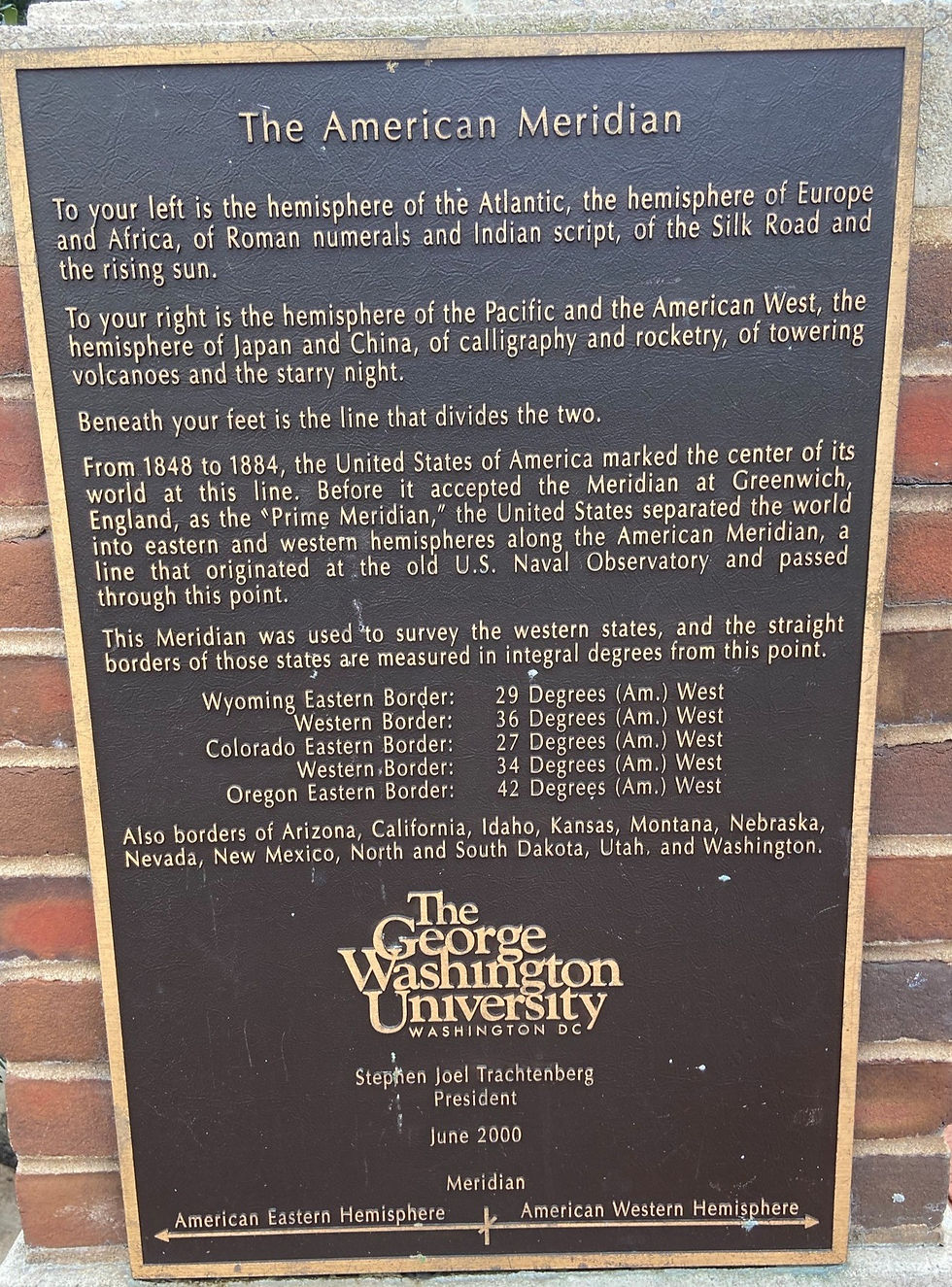The two moons of Mars were discovered by astronomer Asaph Hall, looking through the then largest refracting telescope in the world, on Aug. 17, 1877. The potato-shaped moons Phobos (“Fear”) and Deimos (“Dread”) have diameters of 14 and 7.7 miles. Hall was using the U.S. Naval Observatory’s “Great Equatorial” 26-inch telescope, located on “Observatory Hill” at 23rd and E Streets in Foggy Bottom. (The site is now across 23rd St. from the State Department, overlooking the E-Street expressway.) Over time, facilities occupying that hill including the US Naval Medical School and Hospital, the National Institutes of Health (NIH), and the first headquarters of the Office of Strategic Services (OSS), and its successor, the Central Intelligence Agency (CIA).

The area was known as “Peter’s Hill” after its owner, Robert Peter, Mayor of Georgetown and property owner of much that would become Foggy Bottom. The Hill was designated as “Reservation No. 4” in L’Enfant’s plan for Washington and became part of the District of Columbia in 1791. Thomas Jefferson wanted to locate the U.S. Capitol building there, but George Washington overruled him and chose Jenkins Hill (where it still stands). Instead a military base was established on the bluff overlooking the Potomac in the summer of 1800 and the area became known as “Camp Hill.”

In 1825, President John Quincy Adams first asked Congress to fund a national observatory, “a light house of the sky.” But it was not until 1844 that a Navy “Depot of Charts and Instruments,” including a 9.6-inch refracting telescope, was established on “Observatory Hill.” The Observatory’s work included ensuring the accuracy of clocks and chronometers. Starting in 1845, Washingtonians set their clocks by observing a 2 ½ foot black canvass “time ball” lowered from a pole precisely at noon. By 1873, that time signal was telegraphed to Western Union in New York and from there throughout the country. The Observatory also marked the American Prime Meridian – separating the world’s eastern and western hemispheres and the observations were used to determine the precise borders of western states
But Foggy Bottom was not the ideal location for an observatory. Riverfront industrial development impeded the flow of the Potomac, which formed tidal marshes, giving rise to mosquitos, and exposing the Observatory staff to malaria. Factory smoke would sometimes obscure the sky and traffic would shake the instruments. Thus in 1893, the Naval Observatory was moved to its current location (3450 Mass. Ave. NW). The dome of the smaller telescope remains at the original Observatory Hill.
In 1894, the Naval Museum of Hygiene and laboratories for environmental and occupational medicine took over the site. The museum closed and transferred its exhibits to the Smithsonian in 1904. In its place, the Navy established a new medical school and hospital, which grew to 435 beds. You can still see the hospital buildings from 23rd St. In 1937, the Naval Hospital was moved to its current location in Bethesda, MD. From 1942, the U.S. Navy Bureau of Medicine and Surgery offices took over the buildings and stayed until 2012.

On the western side of the “Navy Hill” a federal hygiene lab was established in 1904. It became the NIH and moved to Bethesda in 1938. With the outbreak of World War II, William “Wild Bill” Donovan’s OSS, which evolved into the CIA (1947) occupied the NIH buildings. In 1961, the CIA moved to Langley, VA but continued to use facilities until 1987. Currently, the entire area is known as “Potomac Hill” and it is part of U.S. State Department of high security operations. It is not open to the public.
Sources: Herman, Jan K., A Hilltop in Foggy Bottom: Home of the Old Naval Observatory and the Navy Medical Department, 4th Ed., U.S. Bureau of Medicine and Surgery, 1996; U.S. General Services Administration, Potomac Hill, https://www.gsa.gov/about-us/regions/national-capital-region-11/buildingsfacilities/development-projects/potomac-hill-campus/history; E Street Complex Historic Preservation Nomination, 2013, https://planning.dc.gov/node/926572; Thomas Mallon, Two Moons, 2001 (historical novel by former Foggy Bottom resident). Follow us @FunkstownDC.

Comments